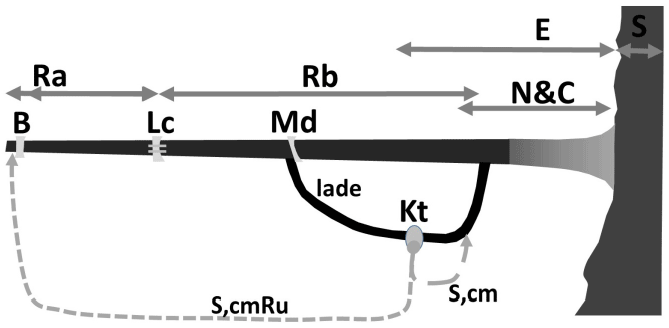Scottish Marine and Freshwater Science Vol 6 No 12: The demography of a phenotypically mixed Atlantic salmon (Salmo salar) population as discerned for an eastern Scottish river
This report investigates the potential for assessment of fish populations at a sub-river
scale. A sophisticated mathematical model was used to separate salmon from a
single river (North Esk, eastern Scotland) into three sub-stocks, based on the
number
Materials and Methods
The River North Esk (Montrose, Angus, Scotland; 56 o 42' 33"N, 2 o 27' 57" E) is the only river in Scotland where data on adult returns, smolt output, fisheries mortality and on population demography, are collected and available at comparable and large spatial scales (the whole catchment). The North Esk is designated as Scotland's monitored salmon river, providing data to ICES and NASCO, and these detailed population data were used for this investigation. The layout of the various fishery and monitoring operations from the coast, through the estuary and along the river banks are shown schematically in Figure 1.
Figure 1. Diagram of the North Esk estuary showing the main features of the river, fishery and salmon population-study. The North Esk's main-stem is shown as the thick black horizontal line, flowing from the smolt-release bridge (B) down over the Logie salmon-counting weir (Lc), over the Morphie Dyke ( MD), on through the estuary (E) and thence to the sea (S). At Morphie Dyke a portion of the river flow is diverted into an old mill-lade (lade), which forms the site of the Kinaber smolt-trapping weir (Kt). After the smolts have been marked a portion (S,cm) are released downstream in the lade to migrate straight to the estuary, and the remaining portion (S,cmRu) are transported a few kilometres upstream prior to release at B (so that their re-capture can estimate the trap-efficiency). The spatial extents of the different fisheries in this stretch of river are indicated for: the estuarine net-and-coble (N&C); the rods below the Logie counter (Rb) and the rods above the Logie counter (Ra, which extend well upriver from the boundary of this diagram). Over 90% of the accessible wetted river area is above Lc, so the calculations enumerate the great majority of the entire breeding population

The local fishery board undertook a small amount of exploratory salmon-stocking during the study, but (given the approach and the low overall effort) that work is not believed to have resulted in any appreciable increases in smolt numbers. Indeed, as the stocked ova were obtained from wild North Esk salmon, studies elsewhere imply that there would likely have been no change or a small decrease (see Young 2013 and Bacon et al., 2015).
Contact
There is a problem
Thanks for your feedback